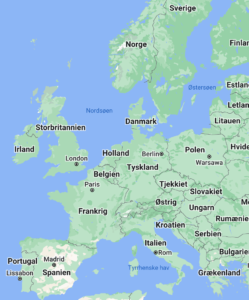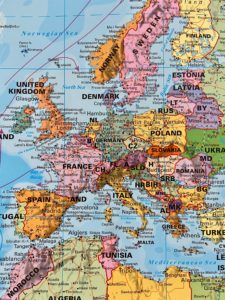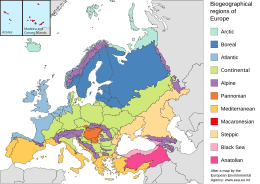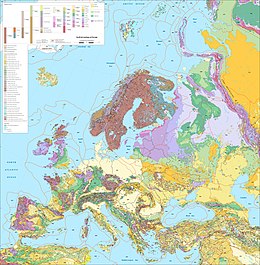EUROPE MAP
 MAP OF EUROPE, EUROPE MAP
MAP OF EUROPE, EUROPE MAP
EUROPE MAP
EUROPE MAP, Map with more than 1000 of the largest cities, sights, places, castles, experiences and all the other fantastic opportunities that only Europe Map has in this beautiful continent. Everything you need when visiting Europe during your holiday.
Travel to your favorite’s distination via EUROPE MAP
MAP OF EUROPE WITH CITIES
Europe is home to many popular and attractive destinations, each with its own unique culture, history, and attractions. Some of the most visited and popular destinations in Europe include:
- Paris, France: Known as the “City of Love,” Paris is famous for its iconic landmarks such as the Eiffel Tower, the Louvre Museum, and Notre-Dame Cathedral. Visitors can also enjoy the city’s charming cafés, romantic riverboat cruises, and world-class shopping.
- Rome, Italy: The “Eternal City” of Rome is known for its rich history and stunning architecture, including the Colosseum, the Pantheon, and the Vatican City. Visitors can also enjoy delicious Italian cuisine, take a stroll through the charming streets of Trastevere, and explore the many museums and art galleries.
- London, United Kingdom: London is a cosmopolitan city with a rich history and culture. Visitors can explore the iconic landmarks such as Buckingham Palace, Big Ben, and the Tower of London, as well as world-class museums such as the British Museum and the National Gallery.
- Barcelona, Spain: Known for its unique architecture, including the works of Antoni Gaudi, such as La Sagrada Familia and Park Guell, as well as its famous beaches, delicious Mediterranean cuisine and vibrant nightlife.
- Amsterdam, Netherlands: Known for its picturesque canals, historic architecture, and world-renowned museums such as the Rijksmuseum and the Van Gogh Museum. Visitors can also enjoy the city’s famous coffee shops, cycle through the streets and take a day trip to the countryside.
- Berlin, Germany: Known for its rich history, culture, and vibrant nightlife. Visitors can explore the city’s iconic landmarks such as the Berlin Wall, the Brandenburg Gate, and the Reichstag, as well as the many museums and art galleries.
- Vienna, Austria: Known for its grand architecture, museums, and music scene, Vienna is also home to many famous landmarks such as the Hofburg Palace and St. Stephen’s Cathedral. Visitors can also enjoy a cup of coffee in one of the city’s famous coffee houses and take a stroll through the charming streets of the historic city center.
- Athens, Greece: Known for its rich history and ancient landmarks such as the Acropolis, the Parthenon, and the Ancient Agora. Visitors can also enjoy the city’s delicious Mediterranean cuisine, explore the many museums and art galleries, and take a day trip to one of the nearby islands.
These are just a few examples of the many popular and attractive destinations in Europe. Other notable destinations include Madrid, Portugal, and Prague, Czech Republic. Each of these places offers a unique experience and a wealth of attractions to visitors, making them perfect for travelers of all ages and interests.
Europe Map
 EUROPE MAP
EUROPE MAP
There are 27 countries in the European Union (EU). Here is a list of them along with their capital cities and populations:
- Austria – Vienna – 8.9 million
- Belgium – Brussels – 11.5 million
- Bulgaria – Sofia – 7 million
- Croatia – Zagreb – 4.1 million
- Cyprus – Nicosia – 1.2 million
- Czech Republic – Prague – 10.7 million
- Denmark – Copenhagen – 5.8 million
- Estonia – Tallinn – 1.3 million
- Finland – Helsinki – 5.5 million
- France – Paris – 67 million
- Germany – Berlin – 83 million
- Greece – Athens – 10.7 million
- Hungary – Budapest – 9.8 million
- Ireland – Dublin – 4.9 million
- Italy – Rome – 60 million
- Latvia – Riga – 1.9 million
- Lithuania – Vilnius – 2.8 million
- Luxembourg – Luxembourg – 0.6 million
- Malta – Valletta – 0.5 million
- Netherlands – Amsterdam – 17.3 million
- Poland – Warsaw – 38 million
- Portugal – Lisbon – 10.3 million
- Romania – Bucharest – 19 million
- Slovakia – Bratislava – 5.5 million
- Slovenia – Ljubljana – 2.1 million
- Spain – Madrid – 47 million
- Sweden – Stockholm – 10.3 million
Geology
The geological history of Europe traces back to the formation of the Baltic Shield (Fennoscandia) and the Sarmatian craton, both around 2.25 billion years ago, followed by the Volgo–Uralia shield, the three together leading to the East European craton (≈ Baltica) which became a part of the supercontinent Columbia. Around 1.1 billion years ago, Baltica and Arctica (as part of the Laurentia block) became joined to Rodinia, later resplitting around 550 million years ago to reform as Baltica. Around 440 million years ago Euramerica was formed from Baltica and Laurentia; a further joining with Gondwana then leading to the formation of Pangea. Around 190 million years ago, Gondwana and Laurasia split apart due to the widening of the Atlantic Ocean. Finally and very soon afterwards, Laurasia itself split up again, into Laurentia (North America) and the Eurasian continent. The land connection between the two persisted for a considerable time, via Greenland, leading to interchange of animal species. From around 50 million years ago, rising and falling sea levels have determined the actual shape of Europe and its connections with continents such as Asia. Europe’s present shape dates to the late Tertiary period about five million years ago.[239]
The geology of Europe is hugely varied and complex and gives rise to the wide variety of landscapes found across the continent, from the Scottish Highlands to the rolling plains of Hungary.[240] Europe’s most significant feature is the dichotomy between highland and mountainous Southern Europe and a vast, partially underwater, northern plain ranging from Ireland in the west to the Ural Mountains in the east. These two halves are separated by the mountain chains of the Pyrenees and Alps/Carpathians. The northern plains are delimited in the west by the Scandinavian Mountains and the mountainous parts of the British Isles. Major shallow water bodies submerging parts of the northern plains are the Celtic Sea, the North Sea, the Baltic Sea complex and Barents Sea.
The northern plain contains the old geological continent of Baltica and so may be regarded geologically as the “main continent”, while peripheral highlands and mountainous regions in the south and west constitute fragments from various other geological continents. Most of the older geology of western Europe existed as part of the ancient microcontinent Avalonia.
Flora – EUROPE
Having lived side by side with agricultural peoples for millennia, Europe’s animals and plants have been profoundly affected by the presence and activities of man. With the exception of Fennoscandia and northern Russia, few areas of untouched wilderness are currently found in Europe, except for various national parks.
The main natural vegetation cover in Europe is mixed forest. The conditions for growth are very favourable. In the north, the Gulf Stream and North Atlantic Drift warm the continent. Southern Europe could be described as having a warm, but mild climate. There are frequent summer droughts in this region. Mountain ridges also affect the conditions. Some of these (Alps, Pyrenees) are oriented east–west and allow the wind to carry large masses of water from the ocean in the interior. Others are oriented south–north (Scandinavian Mountains, Dinarides, Carpathians, Apennines) and because the rain falls primarily on the side of mountains that is oriented towards the sea, forests grow well on this side, while on the other side, the conditions are much less favourable. Few corners of mainland Europe have not been grazed by livestock at some point in time, and the cutting down of the preagricultural forest habitat caused disruption to the original plant and animal ecosystems.
Possibly 80 to 90 percent of Europe was once covered by forest.[241] It stretched from the Mediterranean Sea to the Arctic Ocean. Although over half of Europe’s original forests disappeared through the centuries of deforestation, Europe still has over one quarter of its land area as forest, such as the broadleaf and mixed forests, taiga of Scandinavia and Russia, mixed rainforests of the Caucasus and the Cork oak forests in the western Mediterranean. During recent times, deforestation has been slowed and many trees have been planted. However, in many cases monoculture plantations of conifers have replaced the original mixed natural forest, because these grow quicker. The plantations now cover vast areas of land, but offer poorer habitats for many European forest dwelling species which require a mixture of tree species and diverse forest structure. The amount of natural forest in Western Europe is just 2–3% or less, while in its Western Russia its 5–10%. The European country with the smallest percentage of forested area is Iceland (1%), while the most forested country is Finland (77%).[242]
In temperate Europe, mixed forest with both broadleaf and coniferous trees dominate. The most important species in central and western Europe are beech and oak. In the north, the taiga is a mixed spruce–pine–birch forest; further north within Russia and extreme northern Scandinavia, the taiga gives way to tundra as the Arctic is approached. In the Mediterranean, many olive trees have been planted, which are very well adapted to its arid climate; Mediterranean Cypress is also widely planted in southern Europe. The semi-arid Mediterranean region hosts much scrub forest. A narrow east–west tongue of Eurasian grassland (the steppe) extends westwards from Ukraine and southern Russia and ends in Hungary and traverses into taiga to the north.
Fauna OF EUROPE

Biogeographic regions of Europe and bordering regions
Glaciation during the most recent ice age and the presence of man affected the distribution of European fauna. As for the animals, in many parts of Europe most large animals and top predator species have been hunted to extinction. The woolly mammoth was extinct before the end of the Neolithic period. Today wolves (carnivores) and bears (omnivores) are endangered. Once they were found in most parts of Europe. However, deforestation and hunting caused these animals to withdraw further and further. By the Middle Ages the bears’ habitats were limited to more or less inaccessible mountains with sufficient forest cover. Today, the brown bear lives primarily in the Balkan peninsula, Scandinavia and Russia; a small number also persist in other countries across Europe (Austria, Pyrenees etc.), but in these areas brown bear populations are fragmented and marginalised because of the destruction of their habitat. In addition, polar bears may be found on Svalbard, a Norwegian archipelago far north of Scandinavia. The wolf, the second largest predator in Europe after the brown bear, can be found primarily in Central and Eastern Europe and in the Balkans, with a handful of packs in pockets of Western Europe (Scandinavia, Spain, etc.).

Once roaming the great temperate forests of Eurasia, European bison now live in nature preserves in Białowieża Forest, on the border between Poland and Belarus.[243][244]
European wild cat, foxes (especially the red fox), jackal and different species of martens, hedgehogs, different species of reptiles (like snakes such as vipers and grass snakes) and amphibians, different birds (owls, hawks and other birds of prey).
Important European herbivores are snails, larvae, fish, different birds and mammals, like rodents, deer and roe deer, boars and living in the mountains, marmots, steinbocks, chamois among others. A number of insects, such as the small tortoiseshell butterfly, add to the biodiversity.[245]
The extinction of the dwarf hippos and dwarf elephants has been linked to the earliest arrival of humans on the islands of the Mediterranean.[246]
Sea creatures are also an important part of European flora and fauna. The sea flora is mainly phytoplankton. Important animals that live in European seas are zooplankton, molluscs, echinoderms, different crustaceans, squids and octopuses, fish, dolphins and whales.
Biodiversity is protected in Europe through the Council of Europe’s Bern Convention, which has also been signed by the European Community as well as non-European states.
Politics
The political map of Europe is substantially derived from the re-organisation of Europe following the Napoleonic Wars in 1815. The prevalent form of government in Europe is parliamentary democracy, in most cases in the form of Republic; in 1815, the prevalent form of government was still the Monarchy. Europe’s remaining eleven monarchies[247] are constitutional.
European integration is the process of political, legal, economic (and in some cases social and cultural) integration of European states as it has been pursued by the powers sponsoring the Council of Europe since the end of the Second World War The European Union has been the focus of economic integration on the continent since its foundation in 1993. More recently, the Eurasian Economic Union has been established as a counterpart comprising former Soviet states.
27 European states are members of the politico-economic European Union, 26 of the border-free Schengen Area and 19 of the monetary union Eurozone. Among the smaller European organisations are the Nordic Council, the Benelux, the Baltic Assembly and the Visegrád Group.





